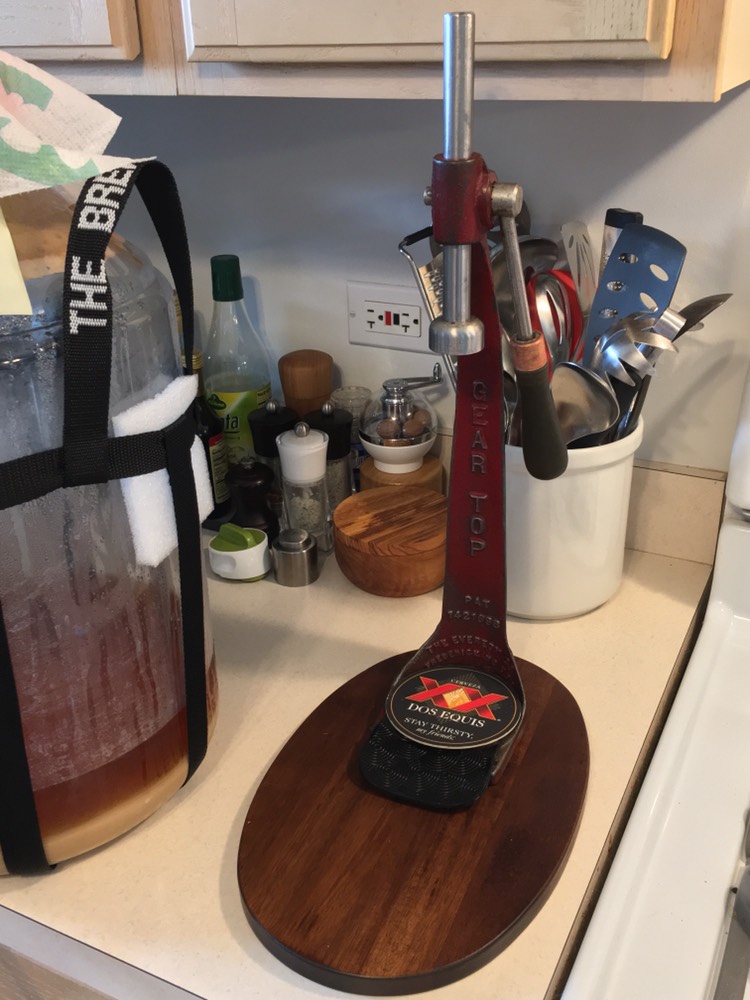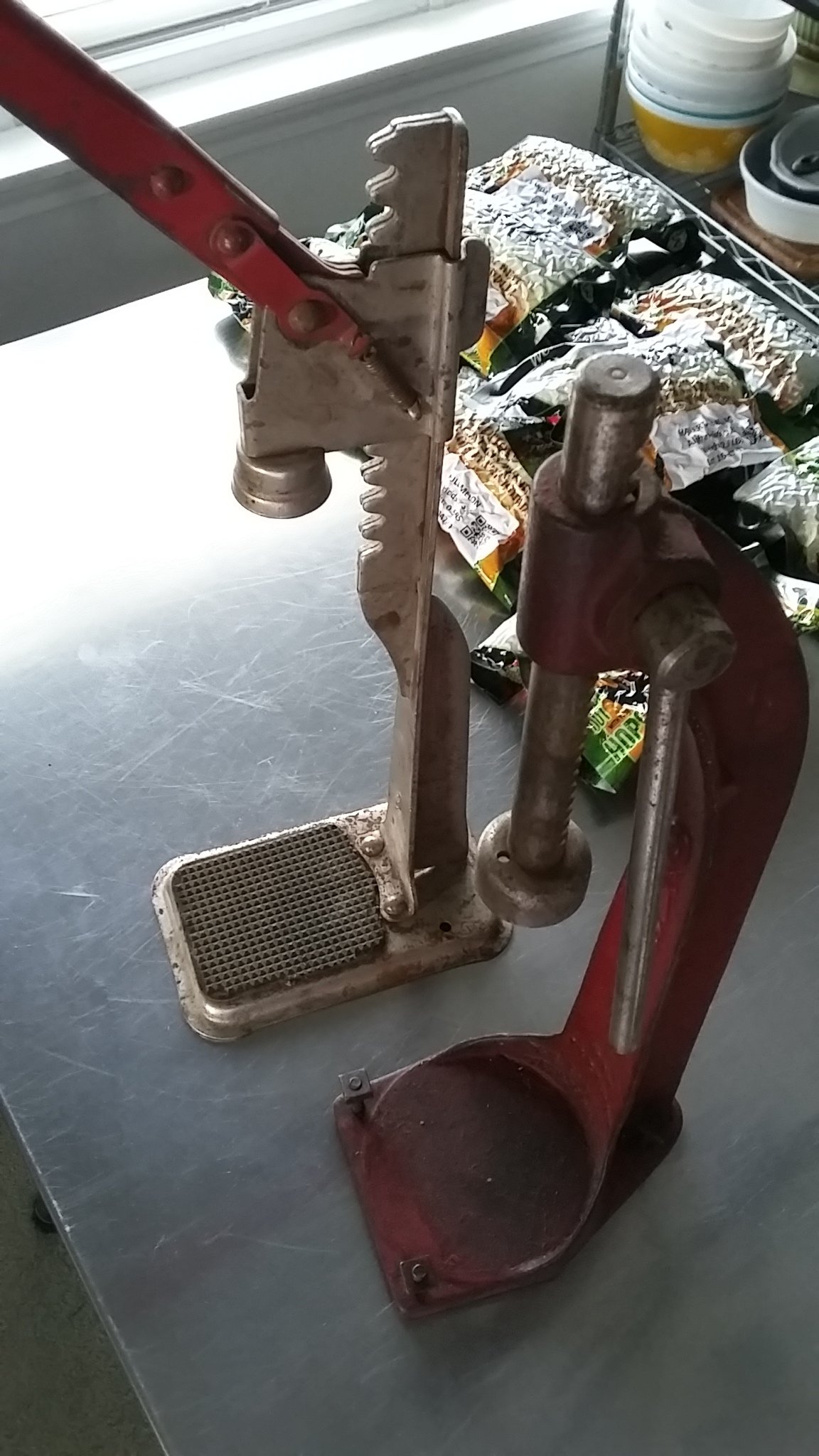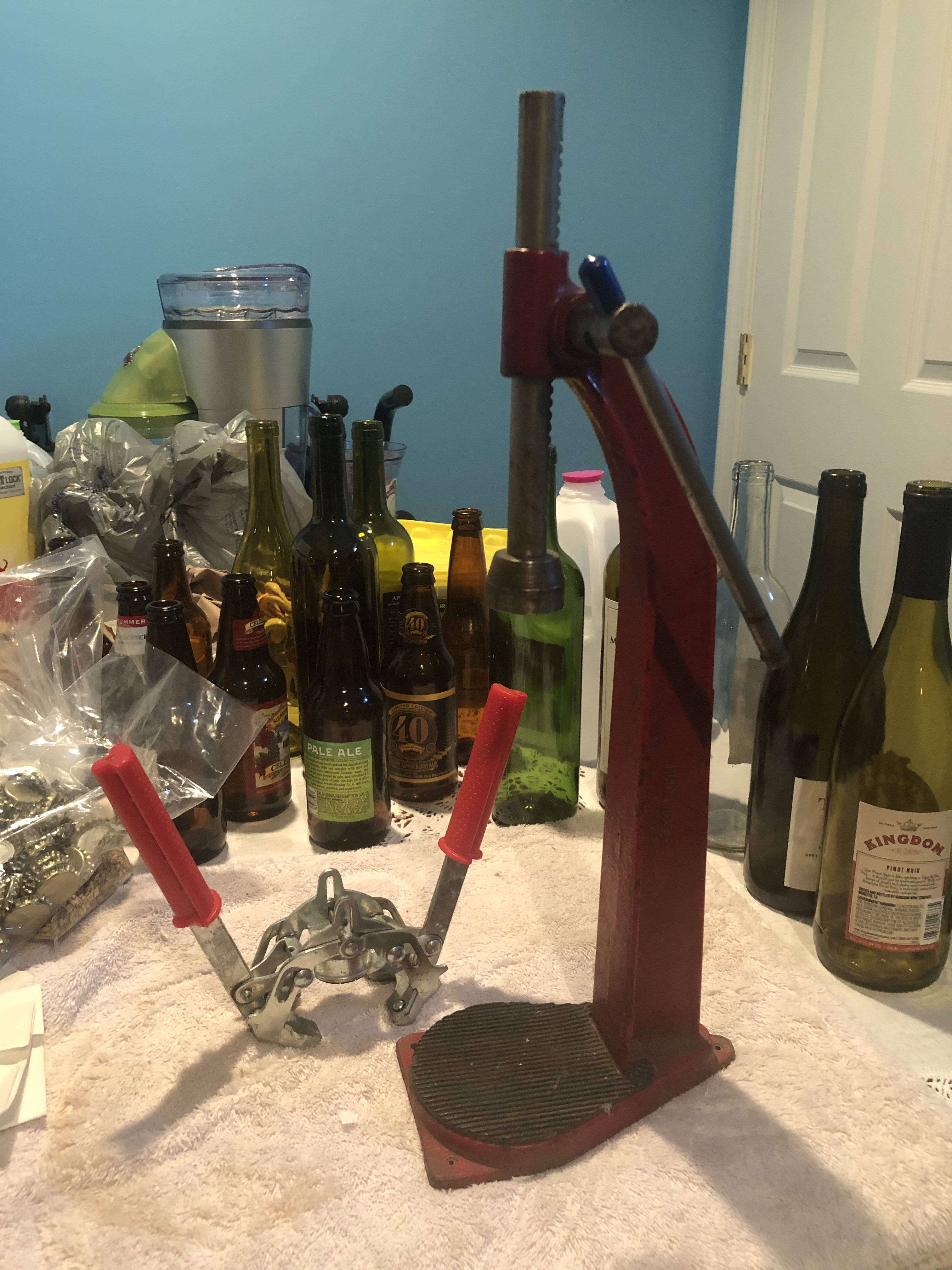I recently picked up a prohibition-era antique cast iron gear top capper, cleaned it up and lubed it, installed a new rubber washer into the bell, then this past Saturday was my first chance to try it out. The capper worked amazingly well, requiring much less force than my wing capper and the bottling went so much faster that I decided to bottle a second batch since everything was already set up! Bench cappers in general are a huge improvement over wing cappers, and if you can get you hands on one of these bulletproof vintage cappers in good condition, you can save quite a bit of money over the $150-200 you'll spend on an all-steel modern bench capper. I picked up two different cappers both made by Everedy in Frederick, Maryland for $8.99 plus $10 shipping on
www.shopgoodwill.com
I freaking LOVE this thing.
EDIT: Here's a video of it in action. Pretty cool that there were homebrew clubs back in the day.
View attachment 576767
View attachment 576768



















































![Craft A Brew - Safale S-04 Dry Yeast - Fermentis - English Ale Dry Yeast - For English and American Ales and Hard Apple Ciders - Ingredients for Home Brewing - Beer Making Supplies - [1 Pack]](https://m.media-amazon.com/images/I/41fVGNh6JfL._SL500_.jpg)









